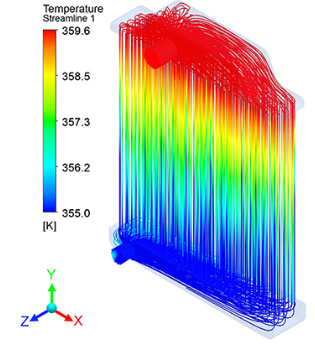I agree with the above. But old tales do not die. (I also know most of what I am going to say has probably already been said by others in some manner.)
Robert makes a valid point about increasing flow will increase pressure and heat. True, but I am going to discount that in this discussion because I believe for any practical engine, we would be below any levels this would come into play, in contrast to the extreme heat generation of a hydraulic system operating at 1000+ psi.
If this were an open system, then I believe the answer would be different. That is, if hot water was poured through a radiator ONE time, then out on the floor, slow would cool more. But this is a closed system. Once the water is through the radiator, it goes back to the engine to pick up more heat.
IF the flow was very slow, the radiator would potentially totally cool the water. But, at such as slow rate, the heat would not be moved away from the engine quickly enough, and it would overheat. On the other hand, the faster the flow, the more the water temperature of the water would be the same throughout the system. And if it were the same through out the system, the water exiting the radiator would be higher than at a slow flow rate, but the water exiting the engine would be cooler than at a slow rate, thus I believe overall better temperature gradients for the overall system.
I believe this is only true if the design of the system allows removing the thermostat to cause the flow to go the bypass route and not the radiator, which some engine designs do. It would be interesting to know what the Austrian did totally. Changing flow patterns through the engine head and block clearly effect cooling. I believe much of the too fast is bad story is based on pump cavitation, as Doug said.
Another potentially interesting question. If you agree with faster (to a point) is better, but then if as I said, faster flow means the overall water temperature becomes the same throughout, then the water leaving the radiator is about the same as the water entering the radiator. And so, indeed it “appears” that little heat was lost. We are often conditioned to think we want a large temperature drop across the radiator. So do we? And if so, then how is the heat being “lost” when the flow is greatest?
Tom
